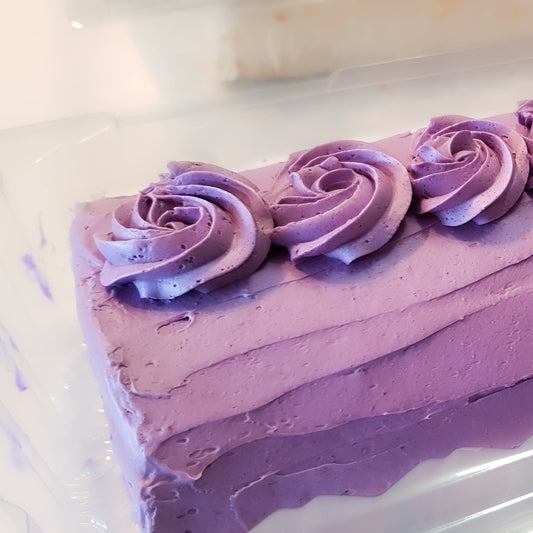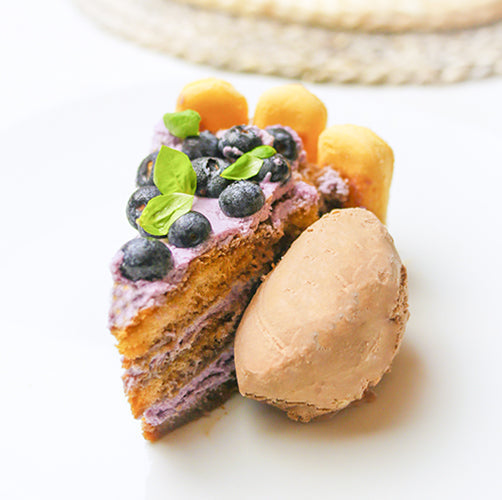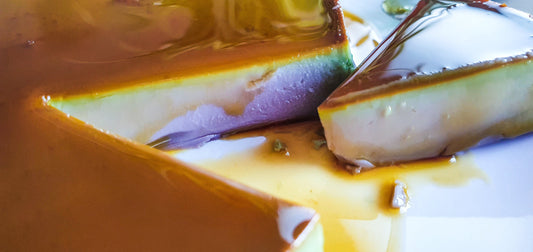Ube: Flavor of the Year
Share
In the ever-evolving world of culinary trends, 2024 is undoubtedly the year of ube. This vibrant purple yam, native to the Philippines, has taken the global food scene by storm, becoming the “it” flavor across various cuisines, from desserts to savory dishes. The rise of ube is not just a fleeting fad but a reflection of broader cultural shifts, innovative culinary exploration, and the growing global appreciation for diverse flavors.

What is Ube?
Ube (pronounced oo-beh) is a purple yam known for its striking color and subtle, sweet flavor. In the Philippines, it has been a staple ingredient for centuries, most commonly used in traditional desserts like ube halaya (a type of sweetened yam jam) and halo-halo (a popular shaved ice dessert). Its flavor profile is often described as a combination of vanilla, nutty, and mildly earthy, making it a versatile ingredient in both sweet and savory dishes.

The Global Rise of Ube
The surge in ube’s popularity can be attributed to several factors. Firstly, the increasing global interest in Filipino cuisine has played a significant role. As Filipino chefs and food enthusiasts gain recognition on the world stage, ingredients like ube have naturally followed, piquing the curiosity of foodies worldwide. The striking purple hue of ube also makes it highly Instagrammable, adding to its appeal in the age of social media-driven food trends.
Moreover, the plant-based movement has further amplified ube’s popularity. With its naturally sweet flavor and rich texture, ube serves as an excellent base for vegan and gluten-free desserts, catering to the growing demand for plant-based options. This has led to an explosion of ube-flavored treats, from ice creams and cakes to lattes and donuts, in both artisanal and mainstream food markets.
Ube in the Culinary Spotlight
The versatility of ube is one of the key reasons for its widespread appeal. In the United States, for instance, ube has made its way into the menus of high-end restaurants, cafes, and even fast-food chains. In Europe, the Filipino restaurants feature desserts and offers Luneta Ice Cream™ Ube as part of their menu. Retailers also sell various ube products like Manong Sorbetero™ Ice Cream and Terifico™ Ube Syrup.
The Future of Ube
As ube continues to captivate taste buds around the world, it’s clear that this trend has staying power. Its unique flavor, versatility, and cultural significance make it more than just a passing craze. In fact, experts predict that ube will continue to influence culinary trends in the years to come, inspiring more chefs and home cooks to experiment with this vibrant ingredient.
Moreover, the rise of ube is part of a larger movement towards embracing global flavors and ingredients, reflecting a more inclusive and diverse culinary landscape. As consumers become more adventurous with their palates, ingredients like ube will likely remain in the spotlight, celebrated for their rich cultural heritage and delicious taste.
In conclusion, ube’s rise to fame as the flavor of the year is a testament to the growing appreciation for global culinary traditions and the endless possibilities of culinary innovation. Whether you’re enjoying an ube latte at a local cafe or indulging in a slice of ube cake at a high-end restaurant, one thing is certain: the world’s love affair with ube is just getting started.





